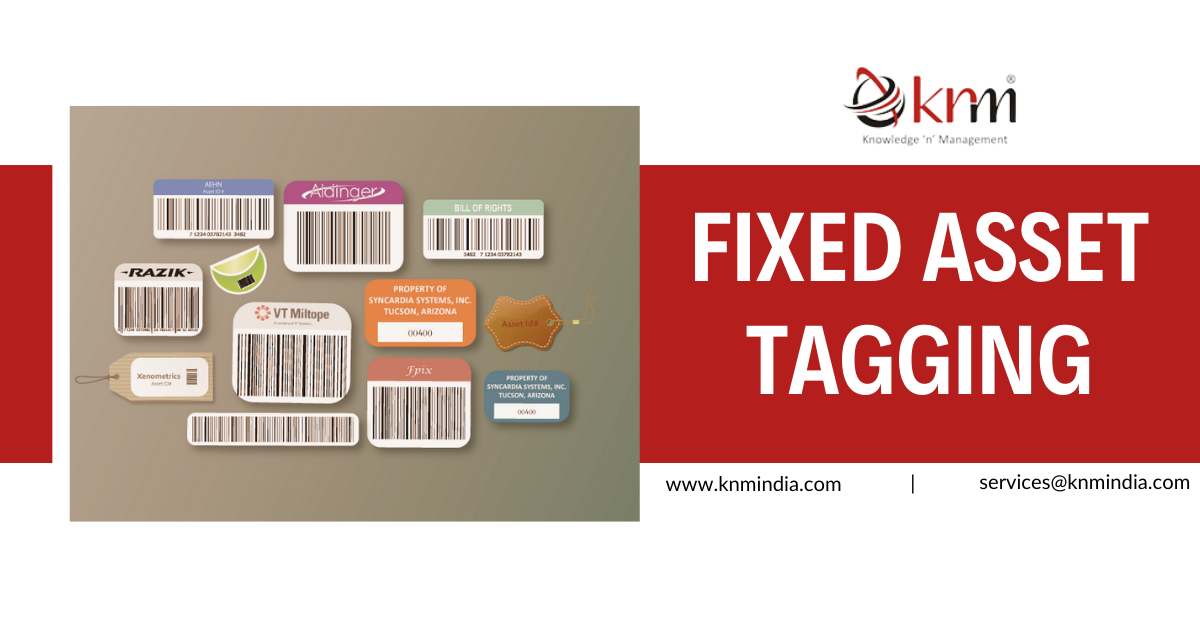Businesses and enterprises around the world are witnessing major expansion and diversification including India, thanks to Liberalisation, Privatisation and Globalisation Policy. Since then, there have been huge technology advancements and world is becoming global village. Having said that, there is distinguishable amount of capital expenditure and multiple compliance requirements are being met. Huge capex requires seamless identification, tracking, and controlling of assets to carry out business operations smoothly and prevent misappropriation of assets. Fixed asset tagging is a way to maintain a proper record of assets and having full control over it also, it provides a proper foundation for physical verification of assets. Once a business starts expanding it is difficult to manage the fixed assets therefore it is advisable to start managing the Fixed assets at initial stage itself.
What is Fixed Asset Tagging?
Asset tagging is the process of affixing tags or labels to assets to identify each one individually and track data from real-time location to maintenance history. These tags can be assigned to both fixed and moveable assets that are spread across multiple sites and warehouses. The purpose of Tagging assets is to track the movement of assets from one place to another place Enabling businesses to achieve a holistic view of all their owned assets.
Benefits of FA Tagging:
Monitoring of Fixed Assets
Labelling assets with tags to monitor and a keep a track of the physical assets owned by the organisation. This acts as a strong foundation for the physical verification of assets during the Audit of financial statements. This also prevents and detect any Asset misrepresentation and misappropriation.
Physical Verification of Assets
Physical count of all fixed assets at periodic intervals to verify actual assets in hand and value and ensure the accuracy of related financial records. PV of assets helps in identifying obsolete, abandoned and unused assets, control capital expenditure, obtain confirmation letters from the third parties, and support for corrective action on unmatched assets.
Idle Asset Review
To identify and make available idle, excess, and underutilized equipment to other departments that may need them.
Helps in presenting accurate Financial statements
Physical count of all the items of inventory to cross check the same with the financial record. To accurately maintain the physical inventory and correctly present and disclose it the financial statement, identifying whether the inventory is being valued correctly as per the accounting standards in the financial statements.
Modes/types of asset tagging
Every organization has its own specific requirements which define its asset choices. Keeping in mind these variations, it is logical to conclude that different companies opt for different types of asset tagging. Following are some types of fixed asset tags:
- Manual paper Tags – These are the most low-cost option, but also the least durable. It’s manual, inaccurate, and unverified task;
- Simple Barcodes – A simple and quick option, but one that requires a stand-alone database. This makes access to information more difficult;
- RFID barcodes –These codes are linked to a radio signal, which makes them work as a “chip”, and can be integrated with GPS technology. RFID barcodes can be read at longer distances, so they are ideal for less accessible assets.
- NFC tags – like RFID barcodes, NFC tags let you register data in real-time, and access information quickly. They only work in relatively short distances (a few centimetres), and you need to purchase tags with specific features for outdoor use;
- QR codes – just like NFC tags, you can read them with a smartphone. They need to be completely visible, which can be a disadvantage with certain assets.
Companies should take expert help in managing the Fixed assets. We at KNM, also provide this service. Our robust quality of Asset Tagging and Verification service gives you the following benefits:
- Our working system makes it easier to track usage, repair, and promotes efficient maintenance actions;
- Saves time on looking for equipment data and history;
- Simplifies precise data collection, to determine which its lifetime stage, evaluate the condition and criticality;
- Because all pieces of equipment are identified and some technologies work remotely, it can help prevents theft.
KNM India can assist you with a range of complete financial services that range from Corporate advisory to Transaction advisory, Pre-incorporation to Post-incorporation, Insolvency and bankruptcy code to Secretarial services, Assurance to Internal audit services, along with Market entry strategy to Foreign company registration in India. To discuss any of these please book your slot, or call us on +91-99105-04170 – or email us at services@knmindia.com to get a quick response.
The article has been contributed by
FCA Sunny Khanna
Sr. Manager-Audit
Further, we shall be happy to assist in case of any clarifications. For a deeper discussion, feel free to revert us at services@knmindia.com
Disclaimer: Information in this note is intended to provide only a general update of the subjects covered. It is not intended to be a substitute for detailed research or the exercise of professional judgment. KNM accepts no responsibility for loss arising from any action taken or not taken by anyone using this publication.


